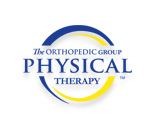One of the most common sports injuries is a ACL(anterior cruciate ligament) tear. Ligaments connect bone to bone. The ACL runs from the anterior area of the tibia to the medial part of the lateral femoral condyle. This ligament prevents forward movement of the tibia(shin bone). Also, the ACL is accountable for around 90 percent of stability in the knee joint. A tear to the ACL is caused by a person makes sharp changes in movement, abruptly stops. Tears can also result in a hit or blow directly to front of the thigh while the leg is planted. Research has shown that women are more likely than men to tear their ACL’s. An person who does experience a torn ACL may hear a popping sound or a feeling that the knee is buckling. There are several tests in order to identify the presence of an ACL, which include the anterior drawer test, Lachman test, and lateral pivot shift test. Treatment will include strengthening the quadriceps muscles and lower extremity strengthening exercises. In general, physical therapy and rehabilitation requires a period of six months. After surgery, a person will be required to wear a locked brace along with crutches for at least one month. Initially, treatment will begin by managing pain and swelling while attempting to regain movement. Then, one will move to exercises like mini wall slides and riding a stationary bike. The goal is for the person to bend their knee to 100 degrees. During weeks 4 and 6, the person will be working to get their knee bent to 130 degrees while focusing on balance. By weeks 6 to 8, the patient should try to achieve full range of motion while increasing the resistance of workouts at therapy. In weeks 8-10, the focus of therapy will be on strengthening the muscles. From week 10 and on, the person should be able to begin jogging and performing some agility drills. Even through the recovery process is long and painful, a person should be able to resume a full active lifestyle.
Another common injury in sports is a tear in the rotator cuff. A tear in the rotator cuff causes a lot of pain and discomfort among adults. A torn rotator cuff will make a person’s shoulder weaker and as a result exempt a person from daily activities. There are three bones that make up your shoulder. They are the humerus, scapula, and the clavicle. There are four muscles that make up the rotator cuff. They are the supraspinatus, infraspinatus, teres minor, and subscapularis muscles. There are two different kinds of tears: partial-thickness tear and full-thickness tear. A partial-thickness tear extends only through a portion of the tendon while a full-thickness tear is a complete tear of the tendon. A tendon connects muscle to bone. Some causes of a rotator cuff tear include injury or degeneration. Also, impaired blood to the tendon, trauma, or postural abnormalities can result in a rotator cuff tear. A doctor will go over a person’s history and measure the range of motion. A X-ray or MRI scan may also be done in order to confirm a diagnosis. The goal of physical therapy treatment is to decrease pain and improve functional mobility of the shoulder. Also, physical therapy will work on strengthening and flexibility of the shoulder.
Tennis elbow which is also knows as lateral epicondylitis is a painful irritation or inflammation of the elbow. The cause is usually overuse. Tennis players, racquet ball players, and baseball players are all prone to this condition. Lateral epicondylitis causes inflammation of the tendons that connect the forearm muscles on the lateral(outside) part of the elbow. The elbow joint is made up of three bones: humerus, radius, and ulna. The bony bump of the outside of the elbow is called the lateral epicondylitis. The condition is most common among people ages 30 to 50 years old. Signs and symptoms include immediate pain on outside of elbow, burning sensation, and/or weak grip strength. The goal of physical therapy will be to increase flexibility, strength, and endurance. A brace may be placed on a person’s forearm to reduce muscular tension and could help a person’s symptoms. Also in physical therapy, a person may receive ultrasound, ice massage, and/or electric stimulation.
